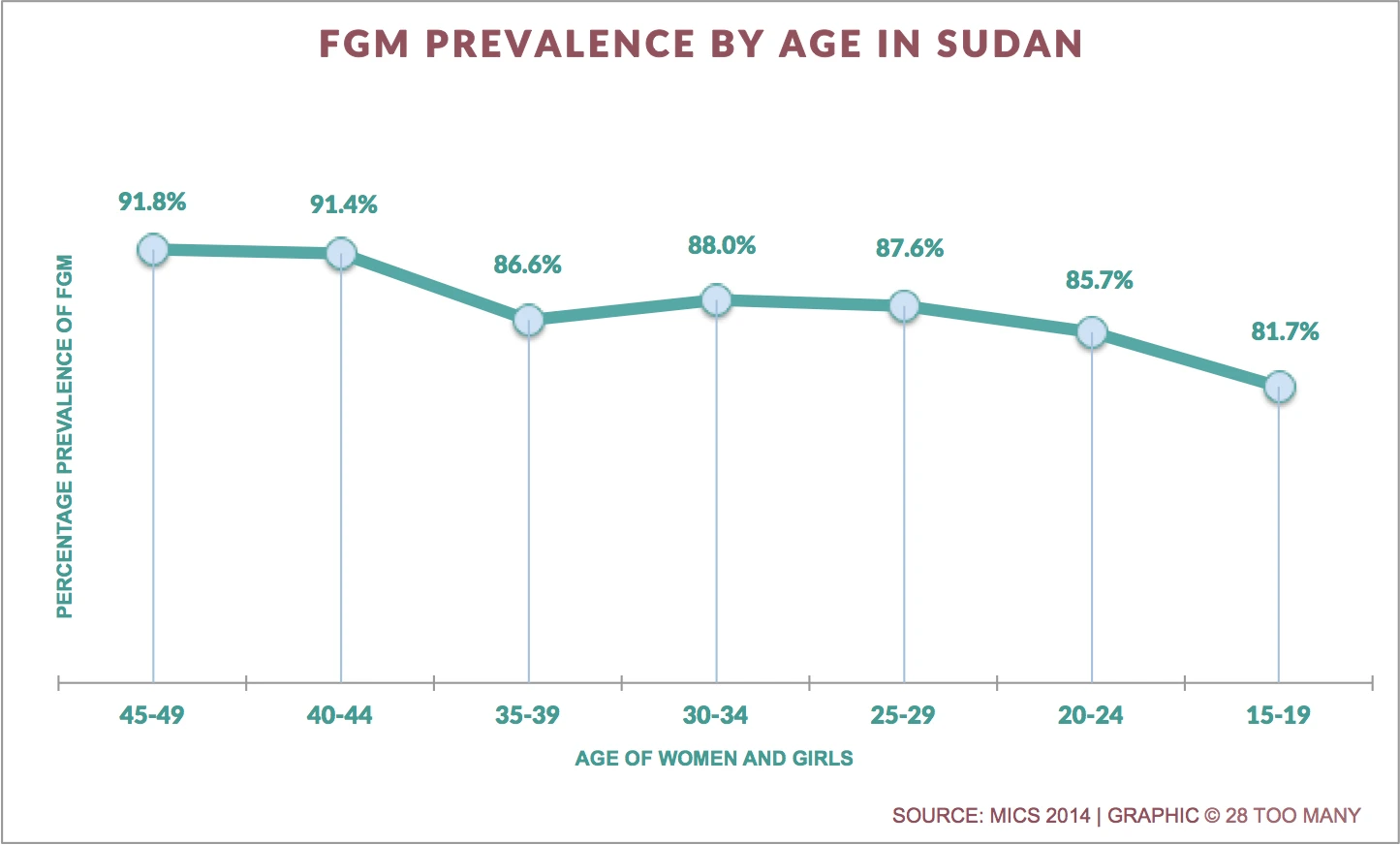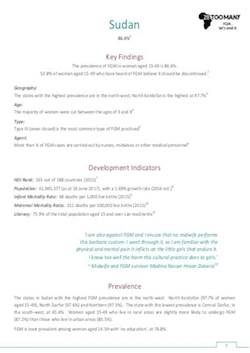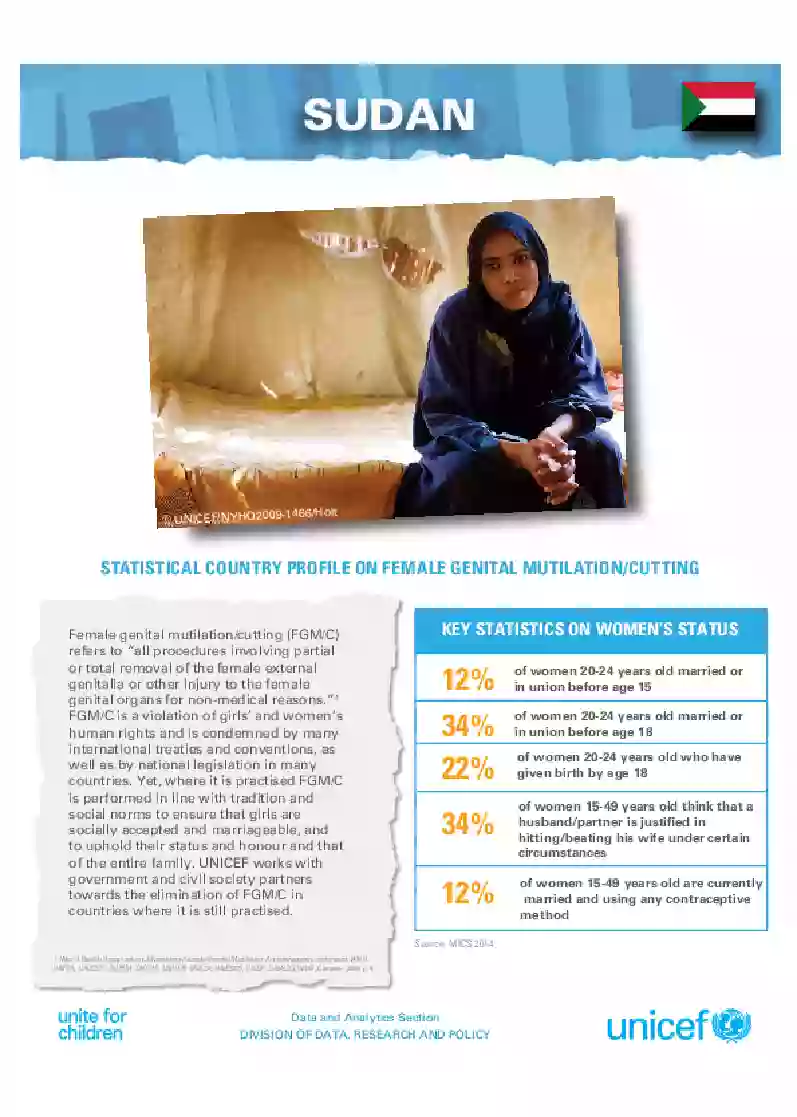Home | Research & Resources | Sudan
Key Findings
The prevalence of FGM/C among women aged 15–49 in Sudan is 86.6%.
52.8% of women aged 15–49 who have heard of FGM/C believe it should be discontinued.
Geography
The states with the highest prevalence are in the north-west; North Kordofan is the highest at 97.7%
Age
The majority of women were cut between the ages of 5 & 9
Type
Type III (sewn closed) is the most common type of FGM/C practised
Agent
More than ¾ of FGM/C cases are carried out by nurses, midwives or other medical personnel
Distribution of FGM/C across Sudan
The states in Sudan with the highest FGM/C prevalence are in the north-west: North Kordofan (97.7% of women aged 15–49), North Darfur (97.6%) and Northern (97.5%). The state with the lowest prevalence is Central Darfur, in the south-west, at 45.4%. Women aged 15–49 who live in rural areas are slightly more likely to undergo FGM/C (87.2%) than those who live in urban areas (85.5%).
FGM/C is least prevalent among women aged 14–59 with ‘no education’, at 76.8%.
52.8% of women aged 15–49 who have heard of FGM/C believe it should be discontinued.
Trends in FGM Prevalence in Sudan
Breaking down the most recent data by age group shows that the prevalence for women aged 45–49 is 91.8%, while for the youngest age group this has fallen to 81.7%. Despite the fact that a small proportion of women may be cut after the age of 15, the data suggests a trend towards lower prevalences among younger women.
FGM/C Legislation in Sudan
On 22 April 2020 the Sovereign and Ministerial Councils of Sudan finally approved an amendment to the federal Criminal Act that criminalises and punishes FGM/C under Article 141A, Law No. 12 of 2020. Previously, only four states in Sudan had attempted to introduce anti-FGM/C laws, but weak implementation and enforcement impeded progress.
Development Indicators
Population Growth
41,945,377 (as at 26 June 2017), with a 1.69% growth rate (2016 est.)
Infant Mortality
48 deaths per 1,000 live births (2015)
Maternal Mortality
311 deaths per 100,000 live births (2015)
SDG Gender Index
Ranked 141 out of 144 countries with a score of 43.1% (2022)


.webp)

_cover.webp)
_cover.webp)
.webp)
_arabic_cover.webp)
.webp)
_cover.webp)
.webp)
_arabic.webp)
.webp)

